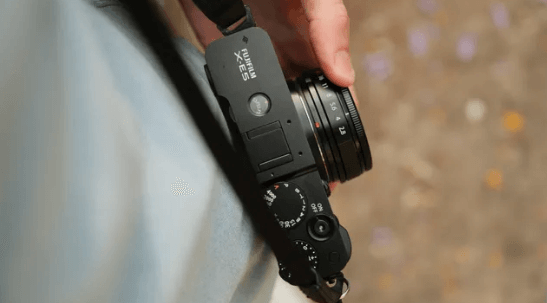I wandered the streets of Valencia with the Fujifilm X-E5 in hand, eager to discover its unique strengths – it feels like a glorious return of the X-E series.

The X-E series has long had a loyal following thanks to its rangefinder-like design and portable size. However, the lackluster build and ergonomic design of the Fujifilm X-E4 left many Fujifilm fans dissatisfied, craving more improvements. But after a two-year hiatus, Fujifilm is back with the Fujifilm X-E5, reviving this classic concept.
Having used this camera for a few days in Valencia, while a full review may still be in the works, I'm delighted to find that Fujifilm seems to have carefully listened to all the criticisms of the X-E4 and used them as a springboard to start anew. The X-E5 is undoubtedly a strong comeback for the X-E series.
In terms of appearance, the build quality has significantly improved. The X-E5 restores the moderately sized front grip and rear thumb rest, while retaining the slim body that makes the series easy to fit into small bags. It measures 124.9 x 72.9 x 39.1 mm and weighs 445 grams, only slightly larger than the Fujifilm X100VI.
The strap eyelets have also made a return – of course, you might not need to dig out your old straps, because the X-E5 comes with a very nice and high-quality rope strap in the box.
In addition, there are some interface adjustments that users will love. It borrows design elements from the X100VI, with a new lever on the front that now offers five programmable shortcuts. The redesigned film simulation dial is located under the left plate, keeping the regular dials intact.
The film simulation knob has also added three dedicated positions for film recipes, allowing users to easily switch between custom looks, while the menu still retains the usual six custom slots. What's more, it introduces a new quick aspect ratio menu and optional digital cropping overlay, features inherited from the Fujifilm GFX100RF.
Under the hood, the camera shares the 26.1MP X-Trans 5 HR sensor and X-Processor 5 with the Fujifilm X-T40 II, bringing subject-detection autofocus and 7 stops of in-body image stabilization. The 2.36-million-dot EVF and 3-inch, 1.04-million-dot tilting LCD screen are retained, though the screen still only flips upwards – which is very convenient for vlogging or selfies.
This configuration isn't entirely new; it was already market-tested when it debuted alongside the Fujifilm X-T5 in 2022 – on paper, it's almost identical to last year's X-T50. But in my usage, it still performs excellently in the X-E5, capable of capturing sharp, detailed images with ample dynamic range and well-controlled grain. Fujifilm's color science and film simulation functions once again make me fall in love with their cameras.

Of course, the camera itself isn't the only highlight. I took all these sample shots using the X-E5 with the brand-new Fujifilm XF 23mm f/2.8 R WR lens. This pancake lens fits perfectly with the X-E5 in terms of ergonomics, slim enough to easily slip into a pocket, while still retaining the practicality of an aperture dial and manual focus ring.
The only slight disappointment for me is that the lens's maximum aperture of f/2.8 isn't as wide as the f/2 on the X100VI's 23mm lens. This feeling of letdown is even more pronounced when the XF 23mm lens is also larger in size than the X100VI's 23mm lens.

The X-E5 will be available in mid-August, in black and silver. The body-only price is $1,699 / £1,249, and when bundled with the XF 23mm f/2.8 R WR lens, it's priced at $1,899 / £1,549. Currently, this lens will be exclusive to the X-E5 bundle and is scheduled for official release in November.

Related Tags: Fujifilm
